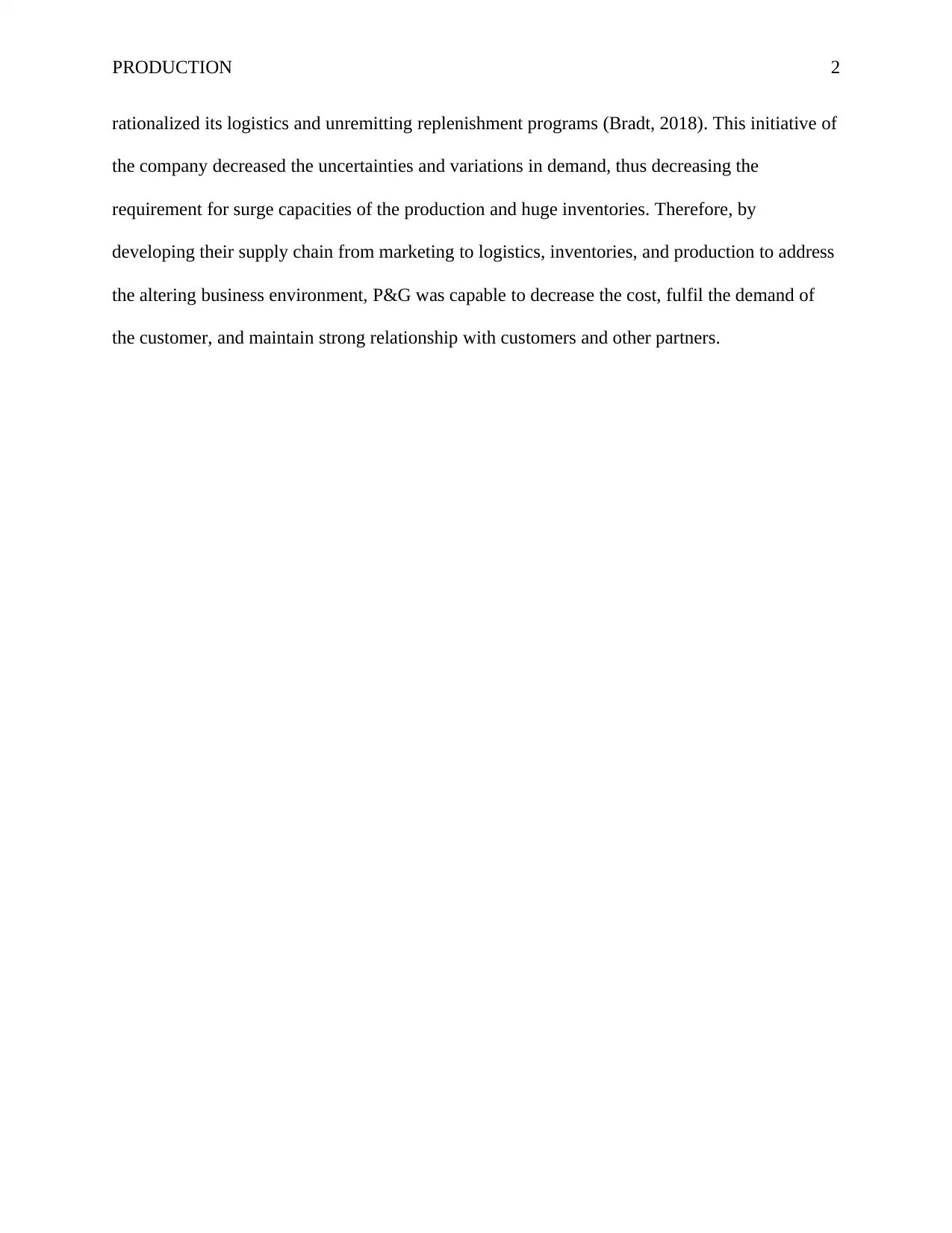Analyzing P&G's Supply Chain Management Strategies for Business Growth
VerifiedAdded on 2022/09/14
|4
|482
|39
Report
AI Summary
This report delves into the significance of Supply Chain Management (SCM) in the context of business operations, emphasizing its role in cost reduction, enhanced customer service, and overall profitability. The report uses a case study of Procter & Gamble (P&G) to illustrate the practical application of SCM strategies. P&G's shift from traditional marketing approaches to a more integrated supply chain model, including partnerships with companies like Wal-Mart, is analyzed. The report highlights how P&G's focus on innovation, particularly in areas like inventory management, logistics, and customer relations, enabled the company to mitigate demand variations, optimize production capacities, and establish strong relationships with both customers and suppliers. The analysis underscores the importance of adapting supply chain strategies to meet evolving business environments and customer demands, demonstrating the crucial role of SCM in achieving sustainable business success.
1 out of 4










![[object Object]](/_next/static/media/star-bottom.7253800d.svg)